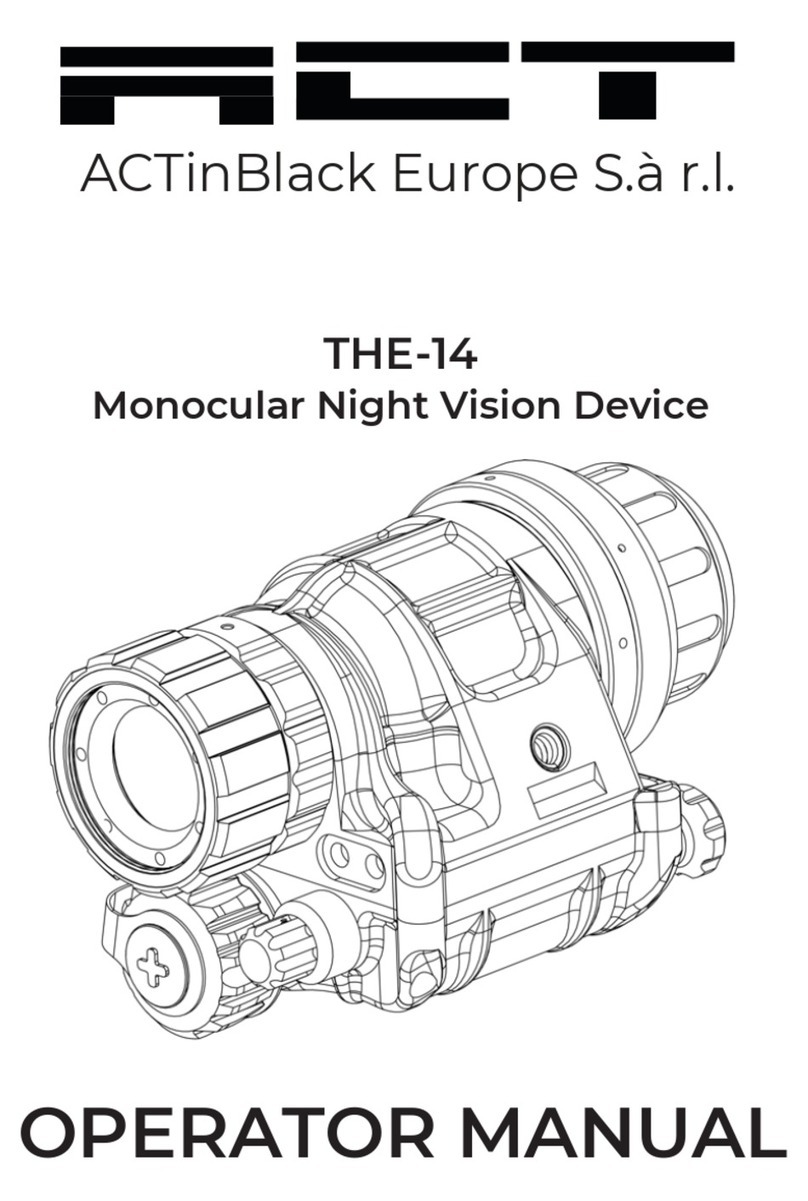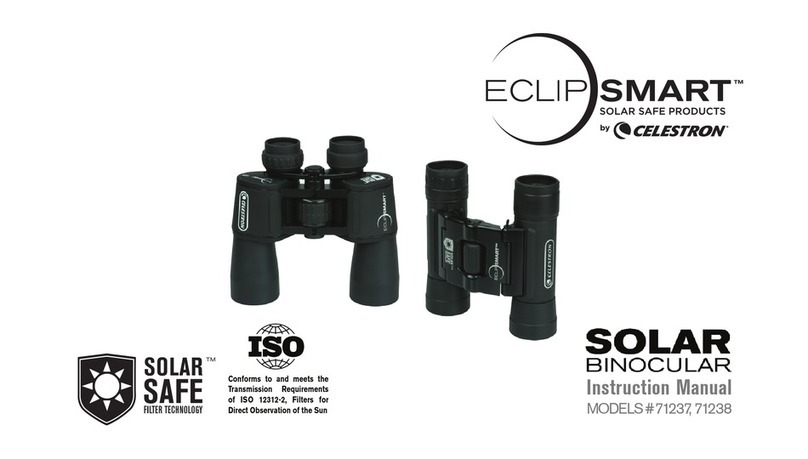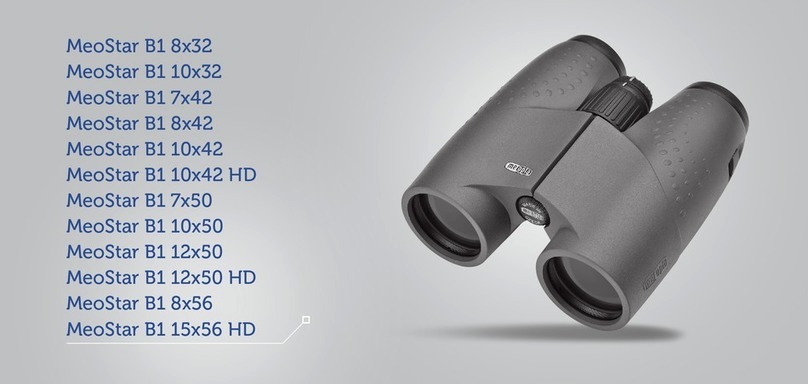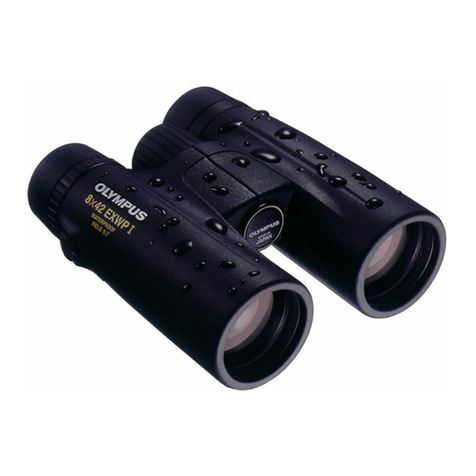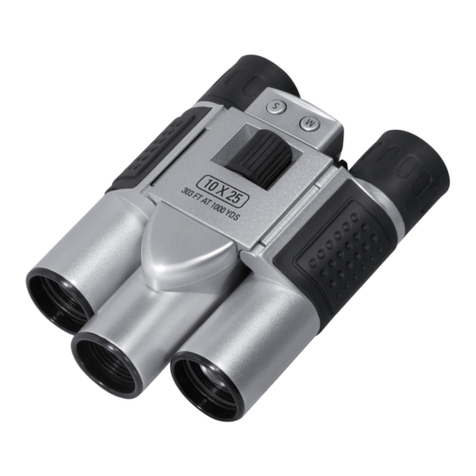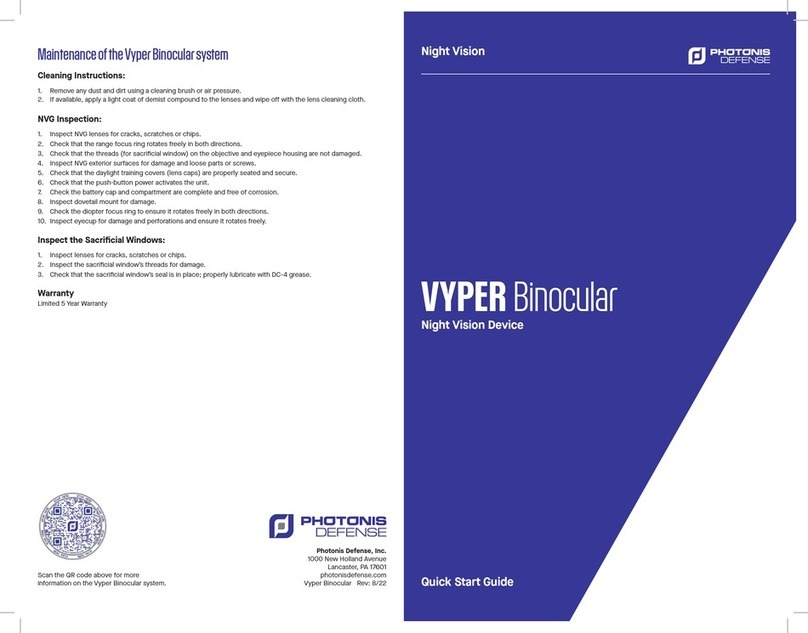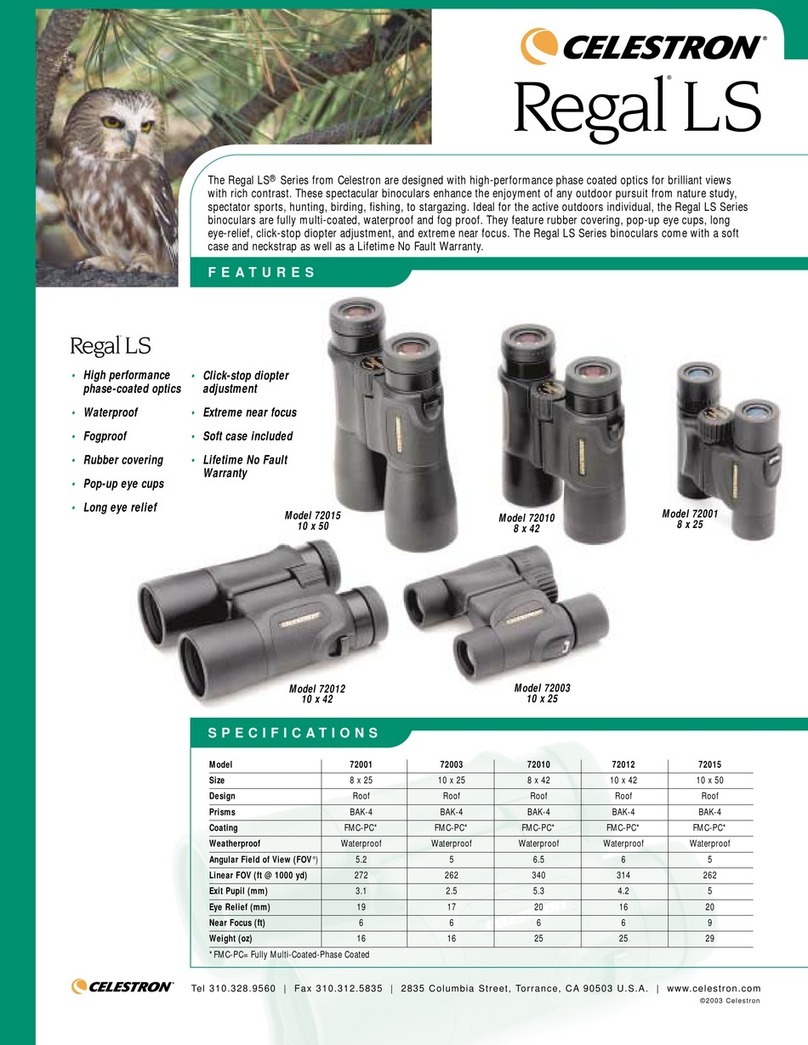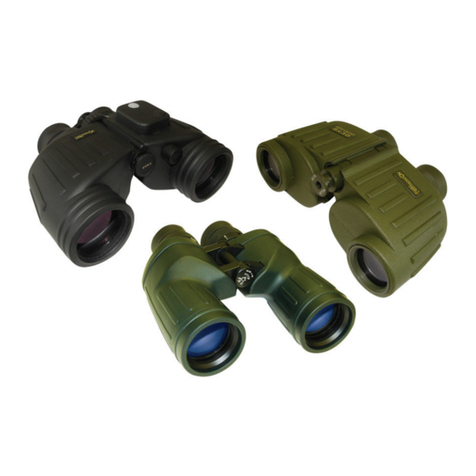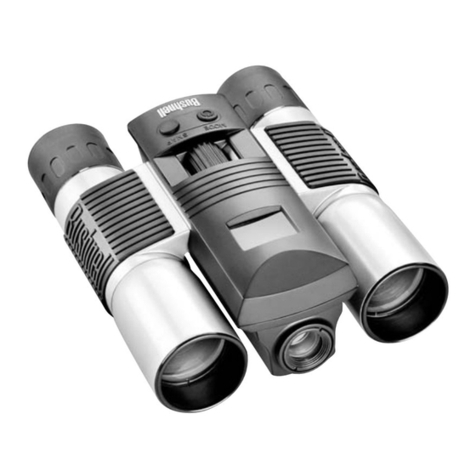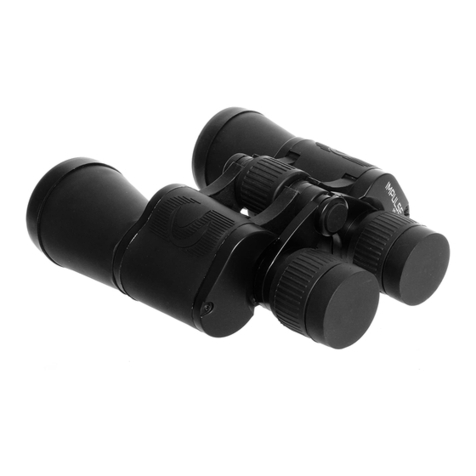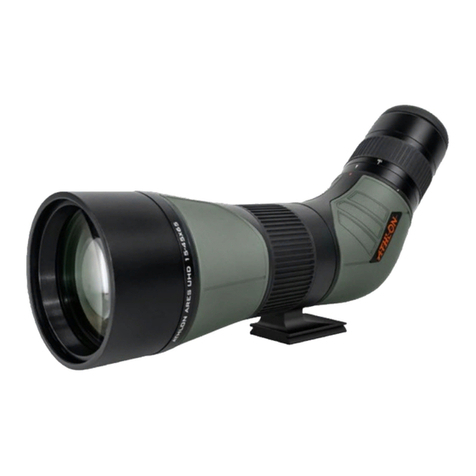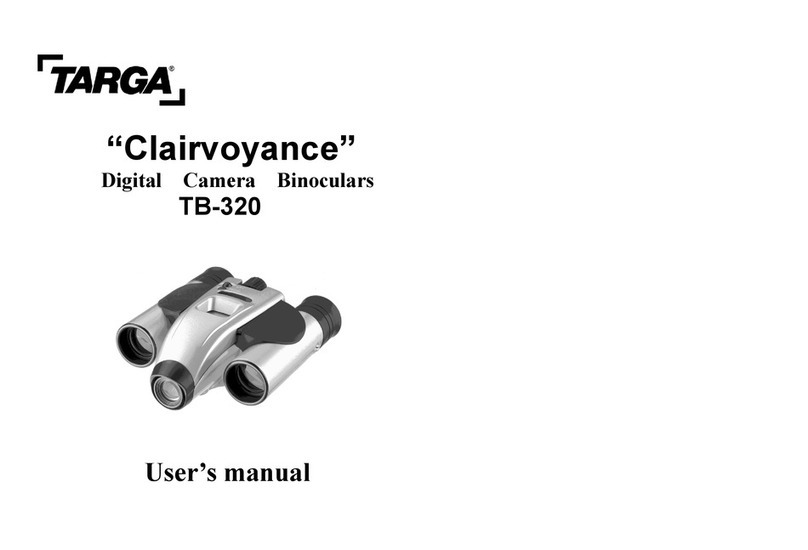ACT DTNVS User manual

DTNVS
Binocular Night Vision Device
OPERATOR MANUAL

Inside Cover

OPERATOR
MANUAL
DTNVS
Binocular Night Vision Device
ACTinBlack Europe S.à r.l.
Rue de l’Industrie,
L-3895 Foetz,
Grand Duchy of Luxembourg
+352-20 30 10 30
info@actinblack.com
www.actinblack.com

Blank Page

ACTinBlack Europe S.à r.l. Rev 1.0, May 2020 v
TABLE OF CONTENTS
Table of Contents
v
List of Illustrations
vii
List of Tables
viii
CHAPTER 1: GENERAL INFORMATION 1
1.1 Introduction 1
1.2 Equipment Description 1
1.3 Standard Kit Parts List 3
1.4 System Performance and Data 4
CHAPTER 2: PREPARATION FOR USE 7
2.1 Introduction 7
2.2 Battery Precautions 7
2.3 Battery Installation 8
2.4 Eyecup Installation 9
2.5 Demist Shield Installation 9
2.6 Sacrificial Window Installation 10
2.7 Device Helmet Flip-Up Deactivation Sequence 10
2.8 IPD Locking System Installation 12
CHAPTER 3: OPERATING INSTRUCTIONS 13
3.1 Introduction 13
3.2 Controls and Indicators 13
3.3 Operation 17
3.4 Operations with IR Source 18
3.5 Operation in Conditions of Blowing Dust or Sand 19
3.6 Operation in Rainy or Humid Conditions 19
3.7 Operation in Salt Water Areas 20
3.8 Shutting Down the Unit 20
3.9 Preparation for Storage 20

ACTinBlack Europe S.à r.l. Rev 1.0, May 2020 vi
TABLE of CONTENTS
(CONT.)
CHAPTER 4: MAINTENANCE INSTRUCTIONS
22
4.1 Introduction
22
4.2 Deactivation
22
4.3 Battery Removal
22
4.4 Cleaning the DTNVS
22
4.5 Cleaning the Optics
23
4.6 Checking for Damage and Corrosion
23
4.7 Neck Cord
24
dsds
d
4.8 Arm Tension
24
CHAPTER 5: TROUBLESHOOTING
26
5.1 Troubleshooting Procedures
26
APPENDIX A: SPARE AND REPAIR PARTS LIST
A.1 Introduction
28
A.2 Contact Information
28
APPENDIX B: WARRANTY INFORMATION
30

ACTinBlack Europe S.à r.l. Rev 1.0, May 2020 vii
LIST OF ILLUSTRATIONS
1-1 Product Illustration 6
3-1 Controls and Indicators 13

ACTinBlack Europe S.à r.l. Rev 1.0, May 2020 viii
LIST OF TABLES
1-1
Standard Kit Parts List
3
1-2
System Performance and Data
4
3-1
Controls and Indicators
13
5-1
Troubleshooting
23

ACTinBlack Europe S.à r.l. Rev 1.0, May 2020 1
CHAPTER 1:
GENERAL INFORMATION
1.1 Introduction:
This manual provides operation and field level
maintenance instructions for the DTNVS. It also provides
specifications and data on the performance of the
Binocular. To ensure the safety of the operator and the
correct operation of the Binocular it is recommended that
this manual is read carefully in its entirety before any
deployment or field application.
1.2 Equipment Description:
The DTNVS is a self-contained night vision device
that enables improved night vision using ambient
light from the night sky. Typically, the moon, star
and/or sky glow.
Optically, it is made up of two sets of objective lens,
image intensifier and eyepiece lens. The objective lens
collects light reflected from the night scene by the moon,
stars, or night sky, inverts the image and focuses that
image on the image intensifier. The
image intensifier converts the captured light into a visible
image and reinverts the image which can then be viewed
through the eyepiece lens.
In situations where there is no light at all the unit can
be switched into the infrared (IR) mode. The
DTNVS is equipped with an internal IR LED
enabling the unit to use this to the human eye
invisible light to operate.

ACTinBlack Europe S.à r.l. Rev 1.0, May 2020 2
The DTNVS is designed for differences in the
physical features of individuals. This allows for a
wide range of operators to use the system safely and
comfortably. Some of these design features are the
power switch, eye relief adjustment, dioptre
adjustment, and objective focus. Lightweight and
versatile, the DTNVS can be hand-held, head-
mounted, helmet-mounted.
The DTNVS consists of two identical monoculars
mounted to a body assembly. The monoculars may
be pivoted sideways (when pivoted outside the field
of view, the monocular will individually turn off.)
When the DTNVS is mounted to a helmet or head
mount, the DTNVS may be flipped up and
temporarily stowed, the DTNVS will automatically
go into Standby Mode turning off the monoculars.
The DTNVS will automatically Turn On when
flipped down again. Each monocular is comprised
of three identical primary subassemblies: objective
lens assembly, monocular housing with image
intensifier assembly and eyepiece lens assembly.

ACTinBlack Europe S.à r.l. Rev 1.0, May 2020 3
1.3 Standard Kit Parts List:
The standard DTNVS kit comes with the items listed in
the following table.
Table 1-1 Standard Kit Parts List
Item
Description
Qty
1
DTNVS Binocular Assembly
1
2
Demist Shield
2
3
Sacrificial Lens
2
4
Bikini Covers
2
5
Day Caps
2
6
Padded MOLLE Pouch
1
7
Manual Download Card
1
8
Hard Carrying Case
1

ACTinBlack Europe S.à r.l. Rev 1.0, May 2020 4
1.4 System Performance and Data:
The chart below lists the technical specifications and
data of the DTNVS system. The data contained herein
is subject to change without notice.
ITEM
LIMITS
Electrical Data
Power Source
Battery (3.0V DC)
Battery Requirements
1x CR123A
Lithium
Battery Life (CR123A)
25 hrs at 18°C (65°F)
Physical Data
Hard Carrying Case Dimensions
33.6cm x 30cm x
14.8cm (13.2” x 11.8”
x 5.8”)
Binocular Dimensions
10.3cm x 10.8cm x
7.8cm
Binocular Weight (Depending on
optics and IITs)
415-515g
Optical Data
Magnification
1.0X
Field of View
40° (+/-2° )
Eyepiece of Focus
+2 to -6 dioptres
Table 1-2 System Performance and Data
Focus Range
25cm to infinity
Eye Relief
25 mm

ACTinBlack Europe S.à r.l. Rev 1.0, May 2020 5
Objective Lens
F/1.2 25mm (PVS14)
Resolution
up to 1.3 cy/mR with 64 lp/mm
IIT
Environmental Data
Operating Temperature
-30°C to 50°C
Storage Temperature
-50°C to 70°C
Illumination Required
Overcast starlight to moonlight
Immersion
20 meter for 120 minutes
Table 1-2 System Performance and Data, (cont.)

ACTinBlack Europe S.à r.l. Rev 1.0, May 2020 6
Figure 1-1 Product Illustration

ACTinBlack Europe S.à r.l. Rev 1.0, May 2020 7
CHAPTER 2:
PREPARATION FOR USE
2.1 Introduction:
This section contains instructions for installing and
attaching various components and accessories to the
DTNVS for operation under normal conditions.
2.2 Battery Precautions:
WARNING
Inspect batteries for bulging prior
to use. I
f
the
battery shows signs
of b
ulging, do not use.
WARNING
Do not heat, puncture, disassemble, short circuit,
incinerate, attempt to recharge or otherwise
tamper with the batteries. Turn
OFF
the DTNVS
if
the battery compartment becomes unduly hot.
I
f
possible, wait until the batteries have cooled
before removing them.
WARNING
Do not replace batteries in a potentially explosive
atmosphere. Contact sparking may occur while
installing or removing batteries and cause an
explosion. Failure to follow these instructions could
result in death or injury.

ACTinBlack Europe S.à r.l. Rev 1.0, May 2020 8
2.3 Battery Installation:
Install one CR123A battery as follows.
1. Remove the battery cap by turning it counter-
clockwise.
2. Check to ensure the O-ring is present. If not, replace it.
3. Observe polarity as indicated on the battery cap.
4. Insert battery into the battery compartment, Minus
(-) end first.
5. Replace battery cap by pushing and turning it
clockwise. Tighten it firmly to ensure a watertight
seal.

ACTinBlack Europe S.à r.l. Rev 1.0, May 2020 9
2.4 Eyecup Installation:
Perform the following procedure to install eyecup
onto the Binocular.
1. Carefully press the eyecup over the end of the eye cup
retainer ring. Rotate the eyecup into proper viewing
position. Adjust for best fit. The eyecup must seal
around your eye and prevent the green glow from
escaping.
2.5 Demist Shield Installation:
Perform the following procedures to install the demist
shield on the eyepiece lens.
1. Carefully remove the eyecup.
2. Carefully remove the eye cup retainer ring by rotating
it counter clockwise
3. Screw the demist shield assembly in clockwise
4. Screw the eye cup retainer ring into the demist shield
5. Carefully replace the eye cup on the eye cup retainer
ring.
CAUTION
If the demist shield is wiped while wet or with wet
lens tissue, you will damage the coating.
NOTE
If inclement operating conditions
are expected to
exist
(e.g. significant temperature change and high
humidity), install demist shield to minimize eyepiece
lens fog prior to execution of mission.

ACTinBlack Europe S.à r.l. Rev 1.0, May 2020 10
2.6 Sacrificial Window Installation:
Perform the following procedure to install the sacrificial
window onto the objective lens assembly.
CAUTION
If adverse operating conditions
(blowing dust or sand)
are expected to exist, attach the sacrificial window to
protect the objective lens from scratches or other
damage.
1. If the objective lens cap is in place, remove it.
2. Carefully push the sacrificial window onto the
objective lens until it stops. Turn the sacrificial
window clockwise until it snaps into place.
3. The demist shield can be utilized as a screw-in
sacrificial window. Note warnings in 2.5
2.7 Device Helmet Flip-Up Deactivation Sequence:
Perform the following procedure if you want to
deactivate the automatic on-off feature when device is
flipped up onto the helmet or head gear.
1. Turn the device so the dovetail is pointing
downwards.
2. Observe first the orange LED lighting up for
200ms, then the red LED lighting up for 200ms
3. Once the Orange LED turns on steady, the user
has 2 seconds to turn the device so the dovetail is
pointing upwards to enter the Setup Mode.
4. If Setup Mode entered successfully, LEDs start
flashing on one side.
NOTE

ACTinBlack Europe S.à r.l. Rev 1.0, May 2020 11
-
If LEDs flash on the left side, automatic flip up
shut off is deactivated
-
If LEDs flash in the right side, automatic flip up
shut off is deactivated
5. Tilt the device to the side that corresponds to the
mode you want to activate in order to switch
setting.
6. Tilt the device forwards (towards the objective
side) save the setting.
NOTE
Repeat above steps to change setting again.

ACTinBlack Europe S.à r.l. Rev 1.0, May 2020 12
2.8 IPD Locking System Installation
Perform the following procedure to install the IPD
Locking System onto DTNVS housing.
1. Place the IPD Locking System on the back of the
unit.
2. Place the shims individually in the space behind the
backplate and secure with supplied screws.
3. Use dials to adjust and set desired interpupillary
distance for the system.
Table of contents
Other ACT Binoculars manuals
